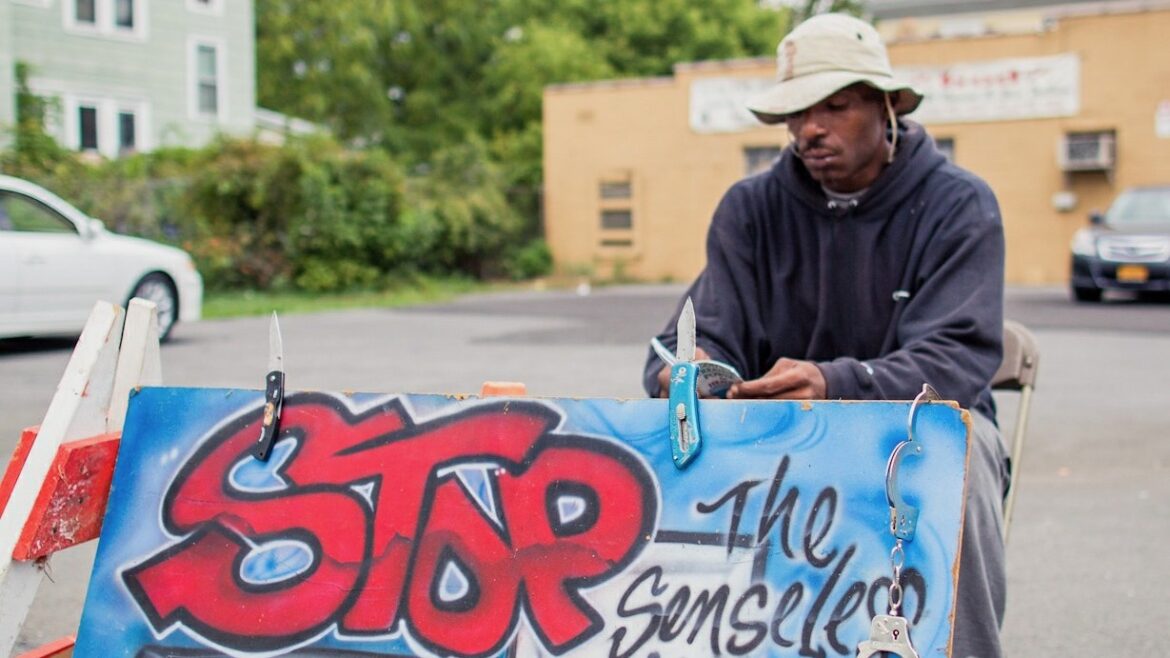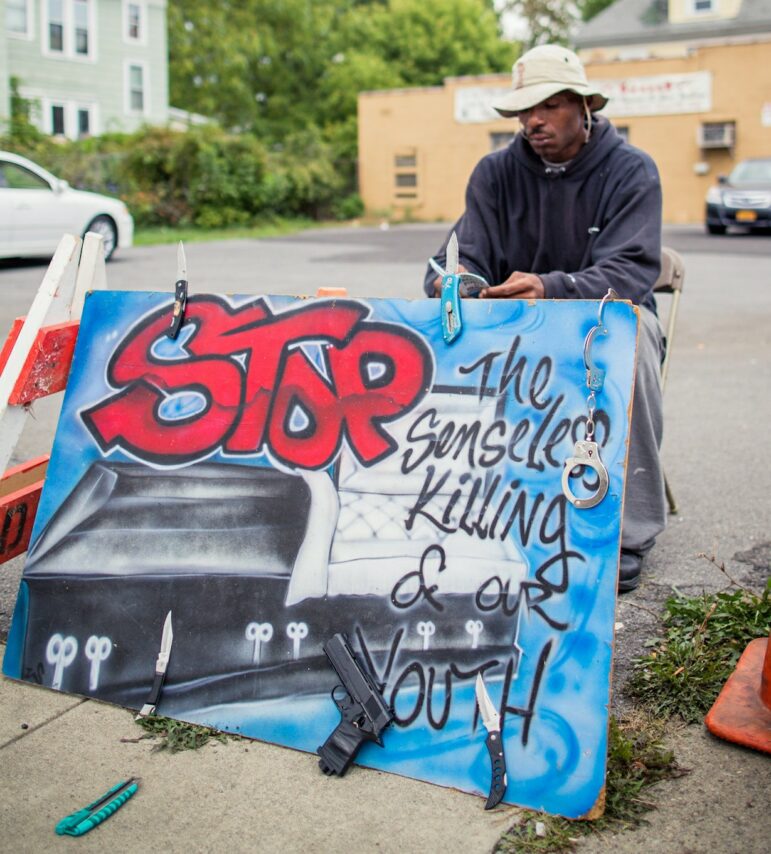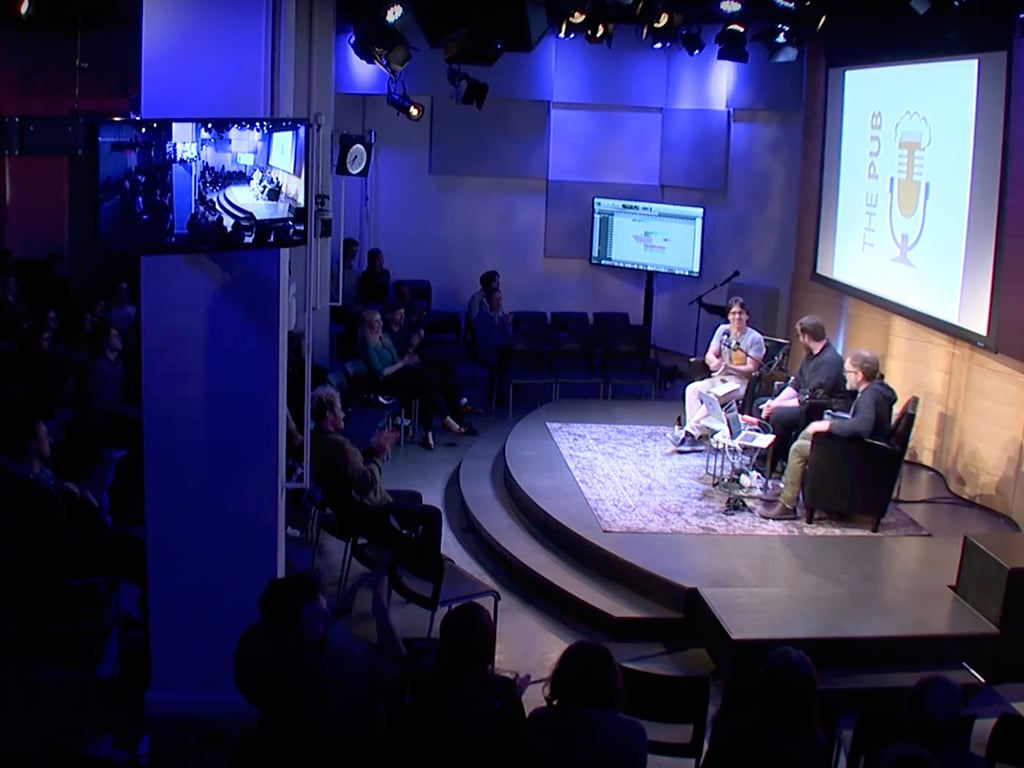For Syracuse’s The Stand, a resident’s crusade against violence became a story with impact

The Stand
Bernard Cannon stands with his sign urging an end to youth violence.
I strive to prioritize residents’ ideas when assigning stories for The Stand, a hyperlocal quarterly paper that covers a marginalized community in Central New York. The paper focuses on covering the people of Syracuse’s South Side, a predominantly Black section of town plagued by poverty and violence.
But how do I make the time to hear directly from individuals and push my staff to do the same?
Spending time in the community an outlet is tasked to serve is an investment. “In addition to representing the public interest, engaged journalism involves the public as true partners, enabling journalism to become complete, more accurate, more trusted, and more meaningful,” journalist Michael R. Fancher wrote in his 2020 essay “The Ethics of Engaged Journalism.”
The structure of The Stand not only allows but encourages residents to become contributors. As a nonprofit, the outlet produces local news through partnerships with Syracuse University and volunteers. In addition to serving the community’s informational needs, another core mission is to train the community to tell its own stories. For this, we offer regular workshops on newswriting, interviewing, photography and more.
Our mission states, “As a voice of the South Side community of Syracuse, The Stand newspaper inspires community conversations by inviting residents to share their stories. Our goal is to have a positive impact on the community by providing opportunities for residents and students to gain journalism skills.”
Incorporating residents is built into our structure. To make this happen, we must create opportunities. We must put out the invitation.
This requires nothing more than advance planning. Start with resources you have on hand. With The Stand’s connection to the university, we recruit journalism professors to lead workshops based on their expertise. Once you can nail down a date, location and expert speaker, promote the training.
I post on our social channels and website and promote the events in our print issue. I email previous workshop attendees and post flyers throughout the neighborhood at high-traffic locations: community centers, churches, the library and busy coffee shops. And I invite a handful of residents and groups I think may be especially interested, depending on the topic.
Say we lead a session on “how to draft a press release.” Small organizations, community centers and advocacy groups are ideal to invite. We can teach them helpful skills as well as engage with them to seek feedback on our publication and insights on stories and topics we can cover.
However you devise to collect such input, what’s most important is what you do with it. We offer workshops where we train community members on how to pitch and craft stories. At these events, we also make time to brainstorm.

During one such workshop, we asked attendees what they were curious about in the community. One resident described Bernard Cannon, “a guy that stands out on the street corner — daily — holding a spray-painted sign that reads ‘Stop the Senseless Killing of Our Youth.’” A driver who slows for a closer look would see that the sign also depicts an open casket. Around the sign’s perimeter are four knives, a pair of handcuffs, and a toy gun that almost appears real.
I wanted to know more: Why is Cannon doing this? What motivates his one-man crusade? We pushed for a profile of him, which became a cover story in the next print issue.
A community contributor who had previously written smaller pieces took on the challenge to write a feature-length profile. I helped him draft questions for an interview. He was also paired with a graduate student photographer. The pair spent several hours with Cannon to learn about his advocacy and to talk with the residents he interacts with.
After the photos were edited and notes typed up, the three of us discussed the story. We share an outline in our trainings to help organize feature stories. A discussion based on what stood out most about Cannon and the observations paired with the structure of the outline helped our contributor draft his first cover story in a manageable way.
Readers of the piece learned that Cannon grew up touched by violence. At 10 years old, he witnessed his mother being shot and killed when she left their apartment to intervene in a domestic dispute. As he got older, he continued to see family and neighbors lost to what he deemed senseless violence — senseless, he said, because too often guns were pulled out over petty disputes, such as a comment or gesture interpreted as disrespectful.
A woman once approached Cannon to complain, saying his sign glorified violence and that he shouldn’t be displaying weapons. But as she argued with him, a young boy gave Cannon a green switchblade. The woman changed her mind because she saw Cannon take a weapon off the street. She became one of his biggest supporters.
If you Google “Syracuse South Side,” top headlines note teens involved in a shooting, a rise in homelessness, violence or the prevalence of poverty. The Stand does not ignore such issues, but we try to go beyond statistics to show how residents unite to address these issues. Cannon was tackling a community problem in a unique way.
Opening the door for a resident to be involved in the story process helps the piece have more nuance, reflect the feelings of residents, and make an impact that can earn trust from readers. This fosters community pride. It makes residents feel represented and more likely to be involved in the future with reporting and to share tips and feedback.
To learn about the impact of our work, we involve readers in “Behind the Scenes Workshops.” Such sessions offer an opportunity for reporters and readers to engage. Reporters share how they come up with stories, and readers give feedback and ask questions.
At one of these meetings, a board member said that when he saw Cannon’s photo in the paper, he thought, “This story is too extreme for The Stand. You guys are writing about some guy that stands out on the street all day with a sign. … He sounds like he’s not all there in the head.”
But reading the article prompted him to consider his own role in addressing community violence. Working with youths in public housing, he’s witnessed one show off a knife to peers. He told the kid to put away the knife, but he didn’t think to take it away — that seemed to be overstepping. But why does an 11-year-old need a knife? In the future, he said, he’ll remember Cannon’s story and ask the youth to hand it over.
I loved hearing this because it showed that a story can have an impact. The story of Bernard Cannon pushed readers to think about their individual responsibility in the cycle of violence that is so often discussed as an abstract concept.
“Engaged journalists foster inclusion to ensure all have a voice and an opportunity to be heard,” Fancher concluded in his piece. “Engaged journalists strive to accurately represent a community as made up of diverse experiences and not as a monolith or as stereotypes.”
This is why I prioritize listening to residents, because when the last word in a piece has been read, they know that they’ve been heard.
Ashley Kang is director of the South Side Newspaper Project, run in partnership with Syracuse University and Syracuse’s South Side residents. She also serves as an advisor to the Syracuse City School District media program. Kang previously wrote for Current about The Stand’s annual Photo Walk. Email her at ashley@mysouthsidestand.com.







